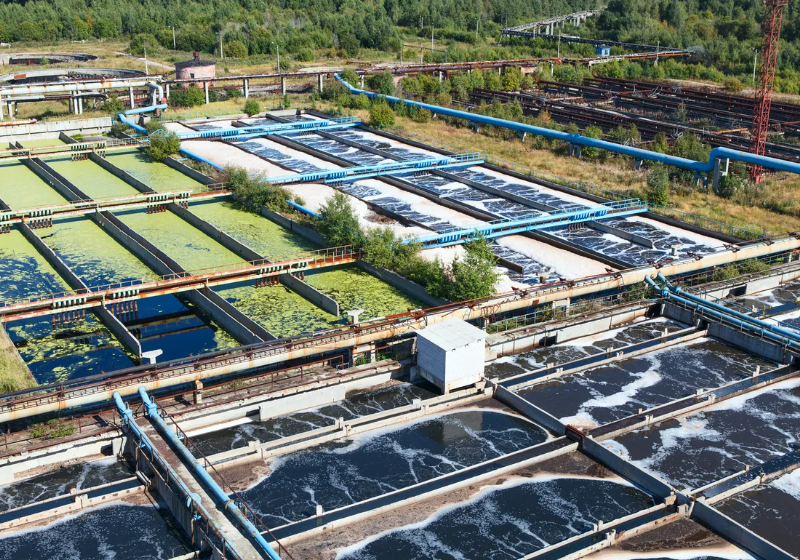Excess Sludge in Activated Sludge Process
Biological treatment is the most widely used and practical technology in wastewater sewage water treatment engineering.
In the process of Biochemical Treatment , microorganisms in activated sludge continuously consume organic substances in wastewater. Among the consumed organic substances, some organic substances are oxidized to provide energy for microbial life activities, while the other organic substances are used by microorganisms to synthesize new cytoplasm, so that microorganisms can reproduce. While microorganisms metabolize, some old microorganisms die, resulting in excess sludge.
How to control the discharge of excess sludge?
Sludge Control
If the fluctuation of inflow and organic concentration in the aeration tank is small, the discharge of excess sludge can be calculated only by the amount of mixed liquor sludge in the aeration tank:
Discharge amount of excess sludge(Q) =sludge amount of mixed liquor in aeration tank/(sludge age x return sludge concentration) sludge amount of effluent from secondary sedimentation tank. When the inflow fluctuates, the sludge amount of secondary sedimentation tank shall also be included.
Sludge Concentration Control
The sludge concentration of the mixed liquor in the aeration tank generally has an optimal value. If it is higher than this value, the sludge must be discharged in time.
Excess sludge discharge amount(Q) =difference between the concentration of mixed liquid in the aeration tank and the ideal concentration × Aeration tank volume/return sludge concentration
Sludge Load Control
According to the principle that the sludge amount in the aeration tank remains unchanged, the sludge output is calculated according to the sludge load, and all newly generated sludge is discharged from the system.
Excess sludge discharge amount(Q) =(sludge amount of mixed liquor in the aeration tank - BOD5 amount of influent water/sludge load)/return sludge concentration, sludge sedimentation ratio control: when the measured sludge sedimentation ratio SV increases, it may be caused by the increase of sludge concentration, or it may be caused by the deterioration of sludge sedimentation performance. In either case, the excess sludge should be removed in time to ensure the relative stability of SV.
It has been proved that SRT is an ideal method to control excess sludge discharge (Q) for urban sewage with the emphasis on nitrogen and phosphorus removal.
How to control the return sludge volume?
Adjusting the reflux ratio according to the sludge level of the secondary sedimentation tank can avoid the sludge loss caused by the high sludge level of the secondary sedimentation tank. The effluent quality is relatively stable, but the disadvantage is that the concentration of reflux sludge is unstable.
According to the sludge sedimentation curve, determine the optimal sedimentation ratio of activated sludge for specific sewage treatment. By adjusting the sludge return flow, the sludge retention time in the secondary sedimentation tank is exactly equal to the time when the sludge reaches the maximum concentration through sedimentation. At this time, the return sludge concentration is the maximum and the return flow is the minimum. This method is especially suitable for denitrification and phosphorus removal process.
#QDEVU #WATERTREATMENT #WASTEWATERTREATMENT #SEWAGETREATMENT #SEWAGEWATERTREATMENT #BIOLOGICALTREATMENT #ACTIVEDSLUDGE
Visit www.evuchina.com for more informations!



